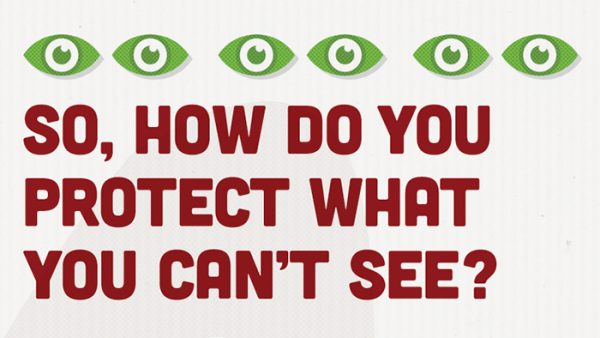
We live in a connected world. True luxury is freedom, flexibility and time – aka convenience. Each point of connection between person to person, person to
product and person to business are conduits of information. I remember the days when I had to memorize my name, address and home phone number. If I ever got lost or needed to connect with mom or dad, I had to have it committed to memory. I still remember my address and home phone number from when I was five. Now, I could count on one hand how many phone numbers I have committed to memory. Those are the ones I use the most and have had to use on forms, so it was worth it to memorize. Otherwise, a few taps on my phone, watch or computer and I have what I need.
We have become dependent on our devices and apps to think for us. And with this comes a greater risk to security. But we are a product of our environment. Even two short years ago we would choose convenience over security – using the same password for everything, agreeing to terms with one click, gladly willing to trade information for a few extra minutes of time. On the streets, our very own Jim talked with Michael Ralnick who said, in regard to reading (or in this case not reading) terms of use agreements, one of the major factors is time. “It’s really hard to read those terms and conditions statements on most of those sites anyway.”
However, demands are changing.
With the recent high-profile security breaches at financial institutions, credit institutions, retailers, you name it, we as consumers are now demanding more. Consumers consider security and convenience as the foundation of their online experience. According to findings from a 2019 Global Identity and Fraud Report, it was revealed that approximately 74% of consumers ranked security as the most important part of their online experience, followed by convenience. In other words, people expect businesses to provide them with both: security and convenience.
Innovation, AI and biometric logins have all come to drive high security and protection, while also reducing the time it takes for a consumer to set up or maintain. But when push comes to shove, depending on the data being shared, the consumer is now more risk-averse. It only takes having your identity stolen one time – having to change literally everything about your digital and physical footprint – for you to walk away from a product or service that doesn’t prioritize your time and privacy. The weighing of risk versus return is becoming more prioritized and prominent when choosing what information we share. We start asking ourselves, “How much time, money or energy will this save versus the risk of a breach?” And, “How often will I even use this service or product?” This is how we decide if it is worth the risk.
So, how do you protect what you can’t see?
Maslow’s Hierarchy says physiological needs are followed by safety – and that includes personal security. But, as our lives have become more and more connected, and as our identities have been relegated to thousands of data points scattered across devices, websites, products and services, it’s vague and hard to visualize, let alone prioritize. We all want to be safe and secure, but then life happens, and we become more willing to risk the vague single data point in the vast expanse that is our personal connected identity – whether that means getting into a stranger’s rideshare vehicle or sharing our personal likes and dislikes with an online clothing company we have never interacted with before.
When Jim talked to Justine Taylor, even she warned of the risks. “You should know what kind of information you’re giving to others, because it can be used in ways that we may not be aware of that can catch you off guard in the future. It’s common sense, I think, but a lot of people are simply too distracted to pay attention.”
Convenience and pack mentality give us a false sense of security. If we don’t dig too deep, we don’t worry until the inevitable massive breach. “Most people, I don’t think, really imagined beyond the surface of what they’re doing” said Justine. And then we blame the companies, not ourselves. This is because we expect the brands we interact with to protect us, and we don’t want to choose. We want both convenience and security. We deserve both.
At the end of the day, consumers struggle to truly understand the vastness of their digital and private data footprint, all while trying to balance security and convenience. As marketers, this provides us the opportunity to put the consumer and their needs first.
Marketer Consideration
Experience
Focus on user experience by clearly identifying “why” consumers are sharing their data with you. Now hold yourself accountable and prioritize their “why.” Identify key points of data sharing and remove as many friction points. Think of security as the blanket wrapping the full process. It isn’t part of it, nor is it all of it; it is integrated and balanced.
Innovation
Invest in innovation and technology advancements. For example, biometric logins. This will help you reduce the demand on the consumer while simultaneously providing more security.
Transparency
Be upfront about what information are you taking and WHY – make it less abstract. The more the consumer connects their personal security with your company, the more likely they will be to trust you and become
a loyal brand advocate.
By demonstrating your understanding and showing (not just telling) your customers, you can build an even stronger utility and value-based bond with them. And this will ultimately generate a positive customer and brand experience, driving advocacy and loyalty.
An Uber Success of Security + Convenience
According to Statista, rideshare is on the rise, having more than doubled from 2015 to 2018 (up from 15% to more than 35% in just three short years). We see this rise of usage for many reasons: reduction in drunk driving; less expensive than maintaining a car in an urban area; and, ultimately, convenience.
But with any peer-to-peer commerce, there is always a risk to security.
For rideshare, security risks and bad press started on a national scale way back in 2013 with an accusation of a choking. When one chooses to participate in rideshare, he or she is essentially getting into a car with a stranger. Exactly what your mom told you not to do. So what does this mean for rideshare companies? That while the usage is rising, so is the need to help consumers balance convenience benefits with security risk.
Here’s a solution.
Uber decided to use the data and private information you provide when riding in order to create a toolkit/live-in app that offers a more secure and safe experience. The toolkit can provide one-click emergency services with location, contact information and even more – all in real-time. They also created a process and structures for background checks, insurance and two-way reviews. And while the data was initially set up to be collected for the basic service, it can be adapted and used for safety and security. … Convenience and security.
What did we learn from a marketing stand point? Listen to the concerns, create a solution and be upfront about it. Uber took negative press and turned it into a more convenient and more secure experience. They now even use the campaign tagline, “Ride with confidence.” They are being transparent and they’ve set up frictionless ways to engage in security best practices.



